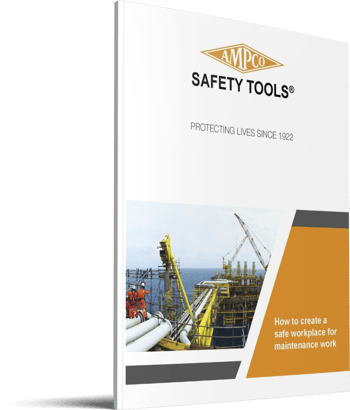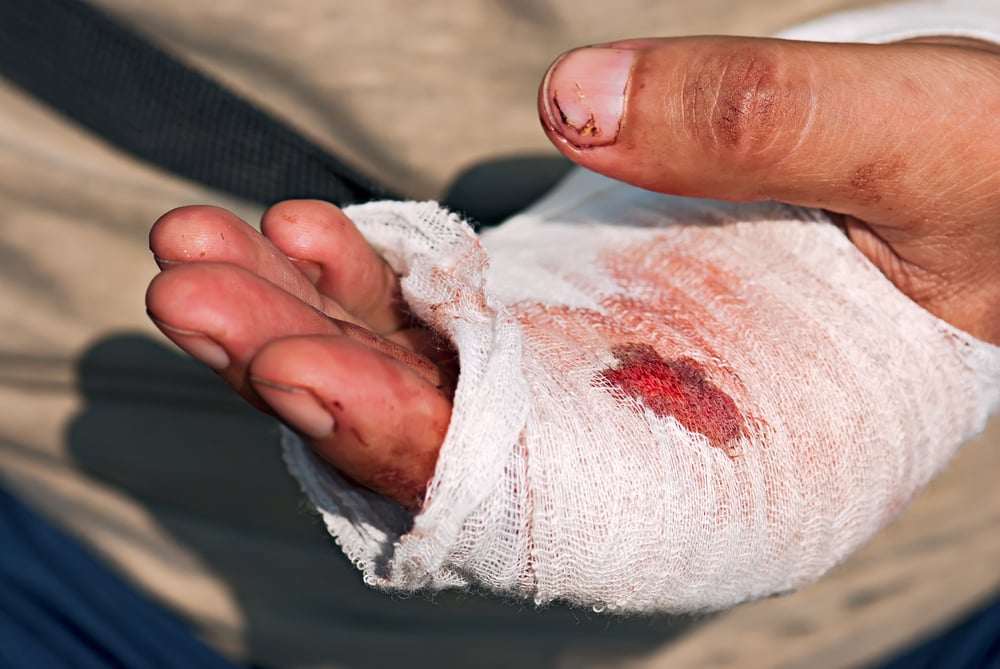Do your workers know enough about hand tool safety? Wrong use of a tool like the hammer wrench in maintenance can be costly. We compiled important safety tips for you in this blogpost.
Hand tools are very useful, but they can also be dangerous. Being an expert in tool use doesn't just entail knowing how to use a hand tool, but also how to use it safely. There are many ways you can potentially hurt yourself when using hand tools, and injuries can result in just a little bit of pain, but they can also have tragic consequences. It is therefore vital that you and your coworkers know how to best avoid injuries that can occur during the use of hand tools. You will know after you've read this blogpost.
The basics of safe hand tool use
Working safely with hand tools begins with training. The people using hand tools should be thoroughly instructed so they know the right procedures. Another crucial prerequisite is the right safety equipment. In most lines of work, you should wear eye protection because of threats like chipped wood or sparks or globules of molten metal or infrared and ultraviolet radiation. These kinds of hazards can occur during grinding, cutting, soldering, welding, chipping and other operations. Depending on what kind of materials you work on – particularly if they are scaly, splintery or rough – you also need to wear gloves, which may also need to be fireproof.
The next thing to keep in mind is that you should always use the tools that are the right size and type for the operation at hand. Never use tools that are far too small or large for the work you are going to do, and never use a tool for work it wasn't made for. If you work in maintenance, you should already know about the importance of maintaining infrastructure. Don't forget that your tools also need maintenance! If tools like hacksaws break, it can get very dangerous. This also implies that your tools should be of good quality to begin with.
Danger may also come not from the tool itself, but from the worker using it. If they work with greasy, oily hands, if they don't carry sharp and pointed tools by their side with points and heavy ends down, if they put tools in their pockets or cut towards themselves when using edged tools, they unnecessarily increase the likelihood of injuries at the workplace.
Tool-specific dangers
Depending on the hand tool, there can also be different kinds of specific dangers. Concerning wrong usage, there are several mistakes you can make. Among other things, don't ever...
- ...use a snip as a screwdriver
- ...use a file as a hammer or a pry bar
- ...use hammer handles for bumping parts in assembly
- ...use screwdrivers as chisels or to check electrical circuits
- ...try to turn screwdrivers with pairs of pliers
- ...use additional objects to increase your leverage with a wrench (you won't need this if you pick the right type and size)
When it comes to tools that have handles, you should never use them without handles and always replace them (not try to repair them!) if they are broken, splintered or cracked.
Hacksaws are particularly dangerous if the blade breaks from too much pressure, cutting too quickly or twisting the saw.
Wrenches always need to be clean and free from oil, so they don't slip. Also, always figure out which way you need to turn a nut before forcefully applying high amounts of pressure on something like a hammer wrench.
Concerning hammers, you should never strike hardened steel surfaces with steel hammers because pieces of steel may break off and injure you or others around you.
If you are using a screwdriver, do not hold the work in your hand. Instead, you should always fixate it in a vise, with a clamp or on a solid surface. As a general rule, remember to never expose your body to the front of the blade tip.
Working safely with AMPCO SAFETY TOOLS
Now you know the most important things to be known about working safely with hand tools. As was mentioned in our blogpost, the key to safety is not just in the right behaviour, but also in the right tools. If you are looking for the best tools to increase safety at your workplace, AMPCO SAFETY TOOLS is here to answer your questions and give you the advice you need. We specialise in providing the tools workers need to work efficiently and safely at the same time. Do not hesitate to contact us if you wish to know more!
Download our whitepaper "How to create a safe workplace for maintenance work" right now for free.




